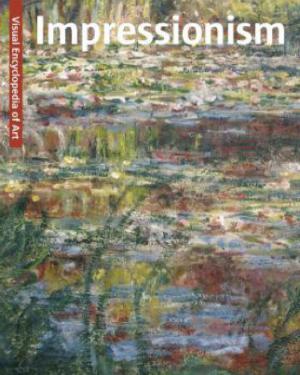
Impressionism

The Visual Encyclopedia of Art
ISBN 9781566499699 (paperback)
Published in August 2012
Amid the innovative developments of the second half of the 19th century, a new trend in painting came to the fore in France. From 1874 onward, it was called Impressionism. Claude Monet, Edgar Degas, Auguste Renoir, Edouard Manet, Camille Pissarro, Alfred Sisley, Mary Cassatt, and Berthe Morisot were the leading lights of this movement that would spread throughout Europe and the United States. Their aim: to give art a modern dimension, free from the contents and the conventions dictated by academic tradition. This outlook gave rise to the development of painting outdoors—en plein air—in which brushstrokes evoked a vibrant reality created by the ever-changing effects of light. Landscape became the subject matter par excellence for Impressionists, as did the city of Paris, where they depicted café life, the opera, and the daily life of the bourgeoisie and ordinary people.
Impressionist painters took part in various exhibitions, such as the memorable shows held by Nadar and Durand-Ruel between 1874 and 1886. In these critical years, reactions to Impressionism led to the emergence of new and important trends, including Pointillism and Post-Impressionism. Pointillism was developed in France by such masters as Georges Seurat and Paul Signac, whose research, featuring pseudoscientific notions, involved painting tiny dots of pure color arranged to compose shapes and volumes no longer subject to the fleeting nature of momentary impressions.
Post-Impressionism involved a wide-ranging array of trends, including the groundbreaking work of men like Paul Cezanne, Paul Gauguin, Henri de Toulouse-Lautrec, and Vincent van Gogh. It was their work, with its broad color fields and dense, expressive brushstrokes, that cleared the way for the historic avant-garde movements of the 20th century.
Impressionist painters took part in various exhibitions, such as the memorable shows held by Nadar and Durand-Ruel between 1874 and 1886. In these critical years, reactions to Impressionism led to the emergence of new and important trends, including Pointillism and Post-Impressionism. Pointillism was developed in France by such masters as Georges Seurat and Paul Signac, whose research, featuring pseudoscientific notions, involved painting tiny dots of pure color arranged to compose shapes and volumes no longer subject to the fleeting nature of momentary impressions.
Post-Impressionism involved a wide-ranging array of trends, including the groundbreaking work of men like Paul Cezanne, Paul Gauguin, Henri de Toulouse-Lautrec, and Vincent van Gogh. It was their work, with its broad color fields and dense, expressive brushstrokes, that cleared the way for the historic avant-garde movements of the 20th century.